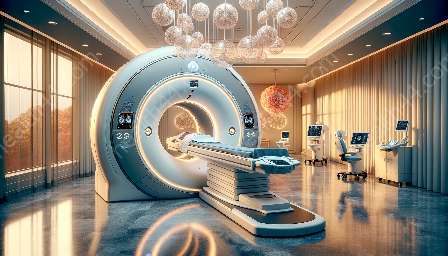Ophthalmic imaging devices play a crucial role in the field of medical imaging and equipment, particularly in the realm of ophthalmology. These devices have significantly advanced the way practitioners diagnose and treat eye-related conditions, providing detailed and accurate insights into the complex structures of the eye.
The Evolution of Ophthalmic Imaging Devices
Ophthalmic imaging devices have experienced a remarkable evolution, propelled by technological advancements and innovative engineering. These devices have transcended traditional diagnostic methods, enabling healthcare professionals to visualize ocular structures with exceptional precision, ultimately improving patient care and treatment outcomes.
Types of Ophthalmic Imaging Devices
There are several distinct types of ophthalmic imaging devices, each serving a unique purpose in diagnosing and monitoring eye conditions. Some of the most prevalent ophthalmic imaging devices include:
- Optical Coherence Tomography (OCT): This cutting-edge technology enables high-resolution cross-sectional imaging of the retina, allowing for the early detection and monitoring of retinal diseases such as macular degeneration and diabetic retinopathy.
- Fluorescein Angiography: By leveraging fluorescent dye and specialized imaging techniques, fluorescein angiography provides invaluable insights into the blood flow in the retina, aiding in the diagnosis and treatment planning for various retinal conditions.
- Corneal Topography: This device measures the curvature of the cornea, playing a crucial role in the pre-operative assessment of patients undergoing refractive surgery, such as LASIK.
- Ultrasonography: Ophthalmic ultrasonography can penetrate opaque ocular media, making it an indispensable tool for visualizing the posterior segment of the eye in cases of cataracts, hemorrhages, and tumors.
- Confocal Scanning Laser Ophthalmoscopy (CSLO): CSLO provides high-resolution, three-dimensional images of the retina, aiding in the early detection and monitoring of various retinal pathologies.
The Intersection of Ophthalmic Imaging Devices and Medical Imaging
The field of ophthalmic imaging is intricately connected with the broader domain of medical imaging. Ophthalmic imaging devices share commonalities with other medical imaging modalities, particularly in terms of technological innovation, image acquisition, and diagnostic application. Furthermore, the integration of ophthalmic imaging data with comprehensive medical imaging datasets enables a holistic approach to patient care, fostering a more nuanced understanding of systemic conditions that may manifest in the eyes.
Advancements in Medical Devices & Equipment
Ophthalmic imaging devices represent a prime example of the significant advancements occurring in medical devices and equipment. Revolutionary technologies, such as handheld retinal cameras and portable OCT devices, are reshaping the landscape of ophthalmology, democratizing access to high-quality eye care and enhancing diagnostic capabilities in diverse clinical settings. These advancements not only benefit patients by facilitating early intervention and personalized treatment but also empower healthcare providers to deliver more efficient and effective care.
Embracing the Future of Ophthalmic Imaging Devices
The future of ophthalmic imaging devices holds immense promise, with ongoing research and development endeavors focusing on enhancing imaging resolution, expanding imaging modalities, and integrating artificial intelligence for automated analysis and interpretation of imaging data. By embracing these advancements, the field of ophthalmology is poised to achieve unprecedented diagnostic precision and therapeutic efficacy, ultimately improving patient outcomes and quality of life.


